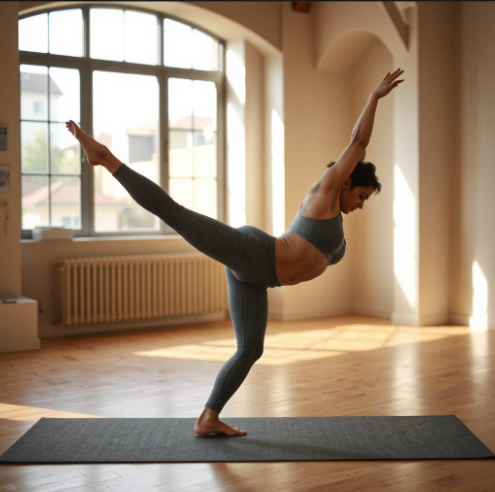Should We Stretch Before a Workout?
Introduction
For decades, pre-workout stretching has been considered an essential ritual in fitness routines worldwide. However, recent scientific research has challenged this conventional wisdom, leaving many fitness enthusiasts wondering. Should we really stretch before working out? This comprehensive guide examines the evidence behind pre-workout stretching, its potential benefits and drawbacks, and provides practical recommendations for optimizing your warm-up routine.
The Evolution of Pre-Workout Stretching Advice
The traditional approach to warming up typically included holding static stretches for 20-30 seconds before physical activity. This practice was based on the belief that stretching would prevent injuries and enhance performance. However, research over the past two decades has prompted fitness professionals to reconsider this approach.
What Science Says About Static Stretching Before Exercise
Multiple studies have shown that static stretching—where you hold a stretch in a fixed position—immediately before strength or power activities may actually:
- Temporarily reduce muscle strength by up to 30%
- Decrease explosive power output
- Potentially impact athletic performance negatively
- Provide minimal protection against injury when done in isolation
A meta-analysis published in the Journal of Strength and Conditioning Research found that static stretching could impair muscle performance when done immediately before exercise, particularly for activities requiring maximal force or explosive power.
Dynamic vs. Static: Understanding Different Types of Stretching
Not all stretching is created equal, especially when it comes to pre-workout routines.
Dynamic Stretching
Dynamic stretching involves active movements that mimic the exercise you're about to perform, gradually increasing range of motion and blood flow to the muscles.
Examples include:
- Walking lunges
- Arm circles
- Leg swings
- Hip rotations
- Torso twists
Static Stretching
Static stretching involves holding a position that elongates a muscle group for a sustained period, typically 15-60 seconds.
Examples include:
- Hamstring stretches
- Quadriceps stretches
- Shoulder stretches
- Calf stretches
When Pre-Workout Stretching Makes Sense
While the blanket recommendation to stretch before all workouts has been challenged, certain situations still benefit from pre-workout stretching:
Activities Requiring Flexibility
For activities where flexibility is crucial to performance, such as:
- Gymnastics
- Dance
- Martial arts
- Yoga
Some degree of static stretching may be beneficial after a proper warm-up, but before the main activity.
Individual Needs Matter
If you have specific tight muscle groups that restrict proper movement patterns, targeted stretching may help:
- Address muscle imbalances
- Improve the range of motion for specific exercises
- Prepare the body for specialized movements
Age and Physical Condition
Older adults and individuals with certain conditions may benefit from gentler stretching routines before exercise to:
- Increase joint mobility
- Reduce stiffness
- Prepare the body gradually for more intense movement
The Optimal Pre-Workout Routine
Research suggests that the most effective pre-workout routine follows a strategic sequence:
-
General Warm-Up (5-10 minutes)
- Light cardio to elevate heart rate
- Activities like brisk walking, light jogging, cycling, or rowing
- Goal: Increase core body temperature and blood flow
-
Dynamic Stretching (5-10 minutes)
- Movement-based stretches specific to the upcoming workout
- Progressive intensity while maintaining control
- Goal: Prepare muscles and joints for the specific movements ahead
-
Sport-Specific Movement Preparation (3-5 minutes)
- Lower-intensity versions of the actual exercises you'll perform
- Example: Bodyweight squats before weighted squats
- Goal: Neural activation and movement pattern rehearsal
-
Save Static Stretching for After
- Perform static stretches after your workout
- Hold each stretch for 15-60 seconds
- Goal: Improve flexibility and assist recovery when muscles are warm
Benefits of Post-Workout Stretching
While pre-workout static stretching has limitations, post-workout stretching offers numerous benefits:
- Helps maintain and improve flexibility
- May accelerate recovery by increasing blood flow to muscles
- Can reduce muscle tension and promote relaxation
- Potentially reduces delayed onset muscle soreness (DOMS)
- Creates an effective cool-down transition
Practical Recommendations Based on Workout Type
Strength Training
- Warm-up: 5 minutes cardio + dynamic movements mimicking exercises with light resistance
- Post-workout: Static stretching focusing on the worked muscle groups
Cardiovascular Exercise
- Warm-up: 3-5 minutes of the same activity at a lower intensity
- Post-workout: Static stretching for major muscle groups is used
High-Intensity Interval Training
- Warm-up: Progressive intensity cardio + dynamic movements specific to upcoming exercises
- Post-workout: Comprehensive static stretching routine
Flexibility-Focused Activities
- Warm-up: Light cardio + gentle dynamic stretching
- During: Progressive static stretching when muscles are warm
- Post-workout: Deeper static stretching
Listening to Your Body: The Most Important Factor
Perhaps the most crucial aspect of any stretching routine is attentiveness to your body's signals. Individual flexibility needs vary significantly based on:
- Age
- Fitness level
- Exercise history
- Previous injuries
- Natural flexibility
- Daily activities and posture
What works well for one person may not be ideal for another. Developing body awareness and adjusting your stretching routine accordingly is essential for long-term fitness success.
Conclusion: The Verdict on Pre-Workout Stretching
So, should you stretch before working out? The evidence-based answer isn't a simple yes or no, but rather:
- Replace pre-workout static stretching with dynamic movement preparation
- Focus on movement-specific warm-ups that gradually increase the range of motion
- Save longer static stretches for post-workout when muscles are warm
- Tailor your approach based on your specific activity and individual needs
By following these research-backed guidelines, you can optimize your workout preparation, enhance performance, and create a more effective overall exercise experience. Remember that fitness recommendations evolve with new research, so staying informed about best practices is key to achieving your health and fitness goals safely and effectively.





0 Comments:
Post a Comment
If you have any doubt, please let me know
Subscribe to Post Comments [Atom]
<< Home